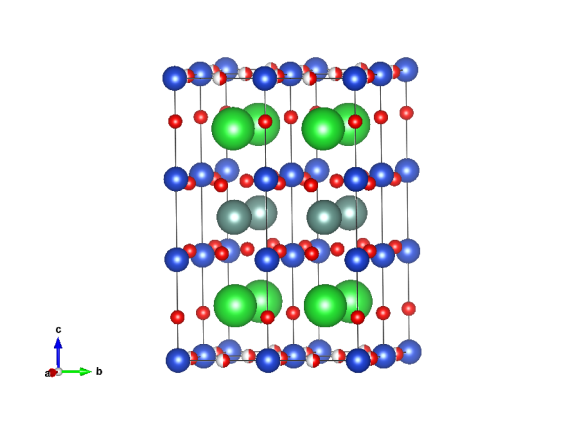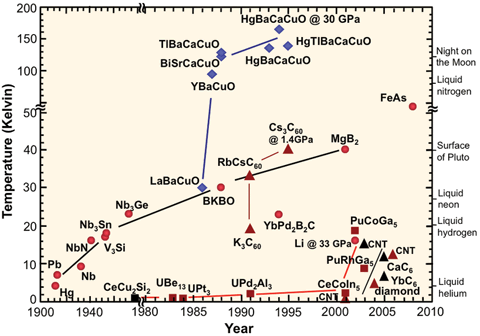Superconductivity Heats Up: Yttrium Barium Copper Oxide
What does it look like?

Image generated by the VESTA (Visualisation for Electronic and STructual analysis) software http://jp-minerals.org/vesta/en/
In the Yttrium Barium Copper Oxide structure shown above, the teal atoms represent Y, the green are B, the blue atoms are Cu, and the red are O.
What is it?
Yttrium Barium Copper Oxide (or YBCO) is a high temperature superconductor, much like Lanthanum Barium Copper Oxide. Its claim to fame, however, is that YBCO was the first superconductor with a critical temperature (at which it becomes superconducting) above liquid nitrogen (77 K). This huge leap was made in 1987 and kicked off a period where different high temperature superconductor materials with critical temperatures of up to 140 K were investigated. While this is still well below room temperature, it’s much hotter than the critical temperature of mercury (4.2 K), the first superconductor ever discovered.

Progress in development of superconducting materials – Source Department of Energy http://www.ccas-web.org/superconductivity/#image1
While the above crystal structure shows YBa2Cu3O7, many other compounds with different Y, Ba, and Cu ratios fall into the YBCO family. Different types of atoms can also be substituted at the Y and Ba sites (e.g. Y1-xPrxBa2Cu3O7), which can alter the properties of the system.
Where did this structure come from?
High temperature superconducting YBCO was first reported in Physical Review Letters by M.K. Wu et al. in 1987. They reported that Y1.2Ba0.8CuO4 had a superconducting transition between 80 and 93 K.
The above YBa2Cu3O7 structure is #1001452 in the Crystallography Open Database, where many other YBCO compounds can also be found.






